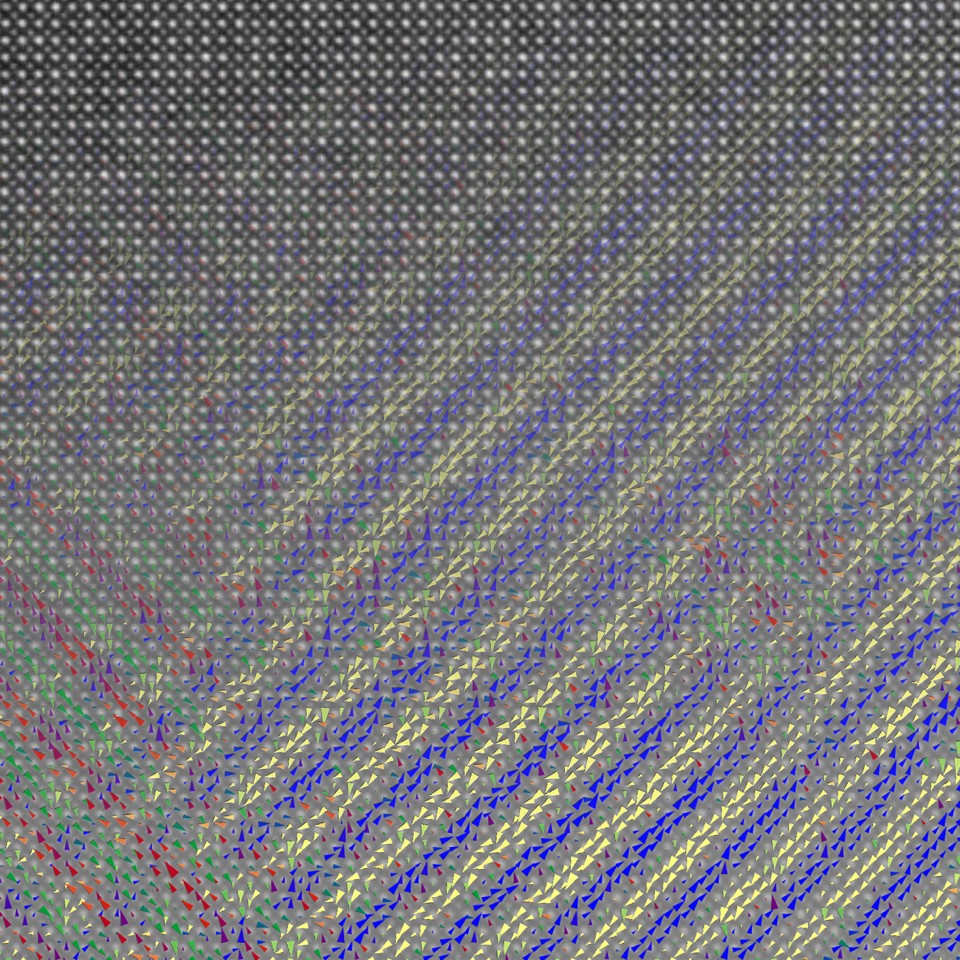Group Maps Atomic Shifts in Charge-Ordered Manganite
(Originally published by Cornell University)
December 7, 2017

Small-scale changes can have large-scale effects in all sorts of systems: Think about how a single car stalled in an intersection could disrupt the movement of dozens of vehicles coming from all directions.
In complex electronic materials, the interactions between electrons and the atomic structure give rise to exotic phenomena. Understanding these properties and behaviors involves the ability to directly visualize how a material changes at the atomic level as these interactions take place.
Using a manganite crystal, a group led by Lena Kourkoutis, assistant professor of applied and engineering physics and a member of the Kavli Institute at Cornell for Nanoscale Science (KIC), has described a new approach to characterizing and understanding exotic charge-ordered phases in which electrons are ordered into periodic patterns. These phases are marked by ever-so-slight displacements (shifts) in the arrangement of a material’s atomic lattice and directly determine the properties of a material.
The group’s paper, “Bending and Breaking of Stripes in a Charge-Ordered Manganite,” was published Dec. 1 in Nature Communications. Doctoral students Ben Savitzky and Ismail El Baggari are co-lead authors.
Using scanning transmission electron microscopy (STEM), Kourkoutis and her team mapped periodic lattice displacements in the manganite – a manganese oxide incorporating other elements – in its charge-ordered state. STEM imaging revealed previously unobserved structures within the material, and atomic-scale displacements created by charge ordering that can lead to fundamental shifts in a material’s properties.
“Our hope,” Kourkoutis said, “was that by understanding the microscopic picture of how [charge ordering] emerges and how different parameters interact in that phase, we’ll get one step closer to understanding how this material works.”
Periodicity refers to the regular arrangement of atoms in a material’s structure. The atoms are arranged in a lattice, or framework, that is stable in the material’s normal state.
For this work, Kourkoutis’ group examined their manganite while in a charge-ordered state. STEM imaging revealed miniscule shifts in a single crystal’s atomic lattice, which could be measured by comparing images with and without charge ordering.
“[Savitzky and El Baggari] figured out how to actually use the information in the image itself to create a reference,” Kourkoutis said. “One of the breakthroughs of this work is finding a way to extract these distortions from the images we record.”
While the atomic shifts were picometers (trillionths of a meter) long – “only one-hundredth of the distance between atoms,” Kourkoutis said – they create fundamental change.
“By displacing atoms in a material by just that tiny little bit,” she said, “the coupling between atoms and the electronic structure changes, and with it the physical properties change. A material could go from a metal to an insulator.”
And by being able to visualize the position of each atomic column within the lattice, they were able to see how isolated distortions in the lattice evolved into striped structures.
Other microscopy techniques – such as scanning tunneling microscopy developed in the lab of physics professor J.C. Seamus Davis, also a KIC member – image the electrons in complex electronic materials. Kourkoutis hopes that her group’s technique, which maps atom-by-atom lattice displacements, will lead to new insights into the microscopic nature of charge ordering.
Also contributing to this work was Robert Hovden, former postdoctoral researcher in Kourkoutis’ lab and now an assistant professor at the University of Michigan, and Sang-Wook Cheong’s group at Rutgers University.
This work was supported by grants from the Air Force Office of Scientific Research, the Packard Foundation, the Moore Foundation and the National Science Foundation. The researchers made use of the Cornell Center for Materials Research, which is supported by the NSF’s Materials Research Science and Engineering Centers program.